Varieties of burgundy peonies and their cultivation
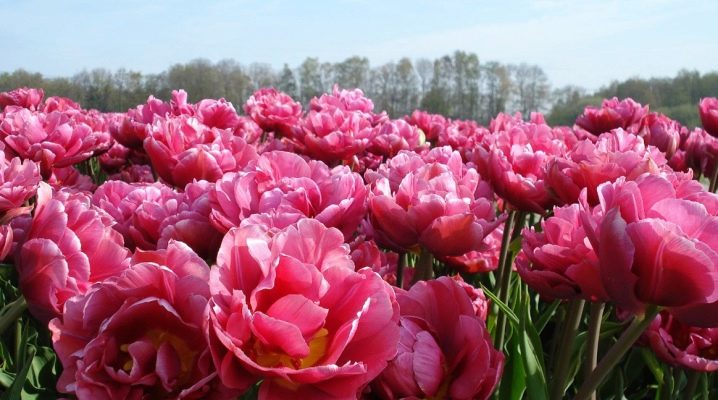
Peonies have earned pride of place in many flower beds and gardens. They are able to endure even a rather harsh winter. But now the dark-burgundy peonies deserve special attention.
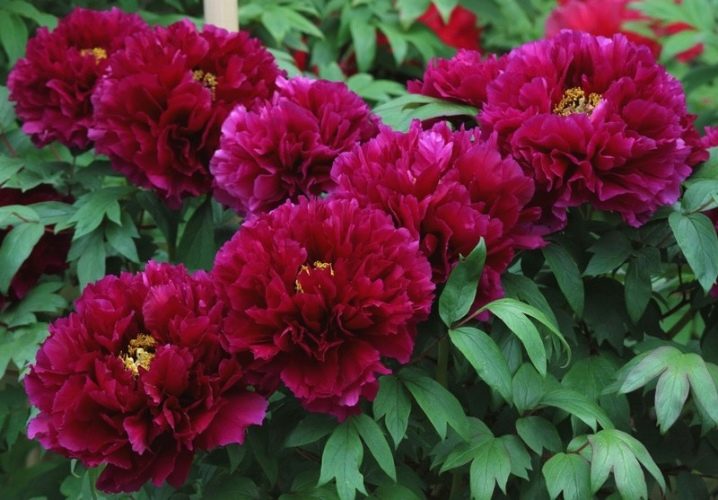
Peculiarities
Rarely does any other type of garden plant boast such a lush, dense flowering. Caring for peonies is invariably simple. It does not require spending a lot of time and effort. Another positive property of plants of this type is the absence of the need for frequent transplantation. In most regions of Russia, any type of flower in June either already blooms, or completely fades away.
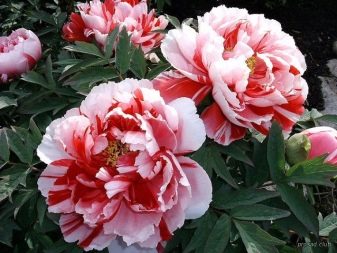

Varieties
You can talk about varieties of peonies with a burgundy color for a long time. It makes sense to start with Lastres. This plant forms bushes up to 0.7 m tall. The burgundy color is characteristic of its petals. In this case, the stamens are distinguished by a yellow-red color.
The diameter of the bud is very large - up to 0.19 m. The foliage, painted in a bright green tone, looks attractive. The dense stems grow straight up. Lastres is praised for its pleasant smell. Breeders believe that this variety belongs to the semi-double group.
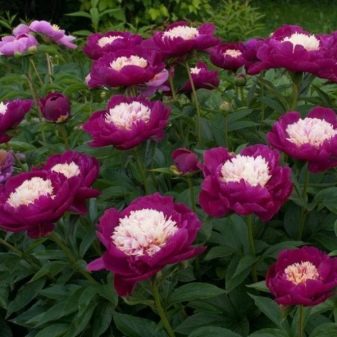
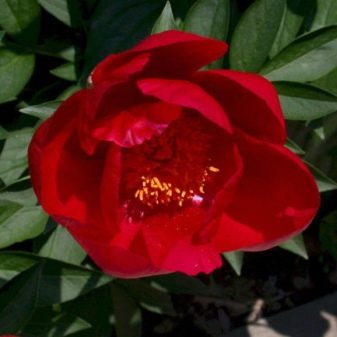
If you don't want to grow exactly a terry peony, you should take a closer look at «America».
Such a plant forms compact bushes. The wide petals are slightly corrugated. The stamens are shortened, grouped like a dense pompom. The variety "Black Panther" is also in demand, giving tree-like buds with a section of 0.18 m.
Semi-double flowers are tied on this peony. The main shade is closer to chocolate, but the petals are silky shine. Karen Gray may also be good. This is a bright plant of Japanese selection, which has a couple of rows of petals. It is characterized by corrugated staminodes of light pink color.


Flowering occurs in medium terms. At the same time, buds up to 0.16 m are formed. Of the varieties developed in our country, "Tornado" deserves attention. It has bomb-shaped flowers. Yellow stamens emerge from the burgundy buds, the diameter of which is 0.11 m.
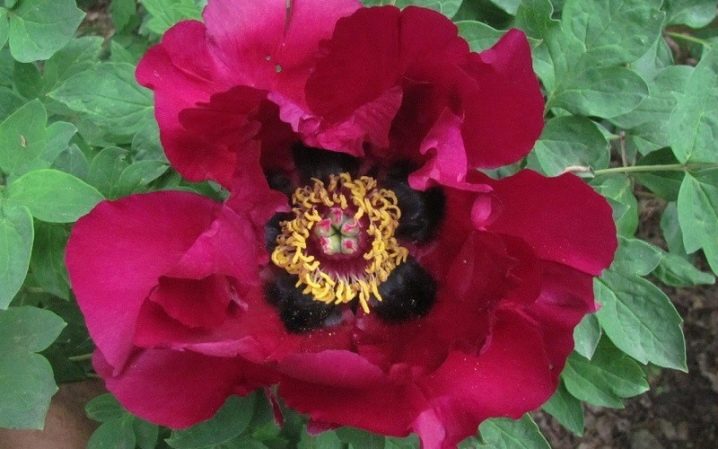
Karen Gray's positive assessment is also due to the fact that such a variety will not fade in the sun. In general, there are few varieties of burgundy peonies. The fact is that it is very difficult for breeders to develop this type, even taking into account the current level of biotechnology.
The Armani variety got its name in honor of the well-known brand of clothing, perfumery and cosmetics. The height of the shrubs reaches almost 1 m. Large leaves shining in the sun develop on them. They acquire a burgundy color at the end of autumn. Terry buds grow up to 0.2 - 0.23 m. Glossy petals look attractive, as they develop, the color saturation only increases.
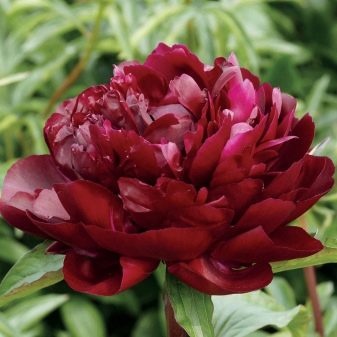
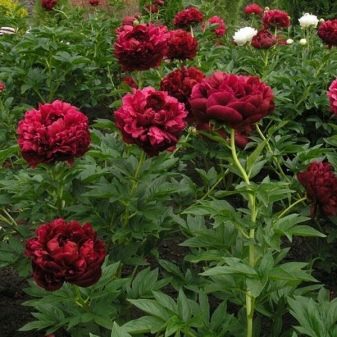
The size of the petals can vary greatly. They are smaller near the center of the bud. The strong scent of Armani seems to have given the associations that give the flower its name. There is only one problem - the variety is quite rare. The chances of buying planting material are slim.
The Dutch cultivar "Peter Brand" may also be attractive. The variety has a long and glorious history - it was developed back in the late 1930s. The height of the peony reaches 0.85 - 0.9 m; it has powerful, sturdy stems with rich green leaves. Each stem can support 2 or 3 flowers. When the buds open, their size reaches 0.18 m; the plant is almost immune to infections and harmful insects.
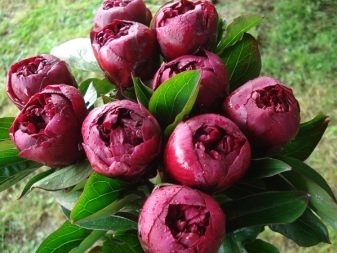
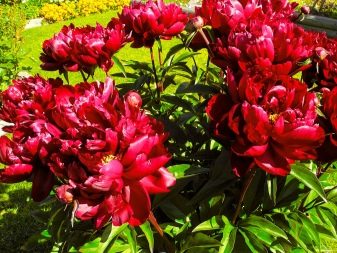
Cultivation
A key requirement when growing peonies is the correct selection of the site.Since all such crops are perennial, the place must be chosen thoughtfully so that you do not have to quickly replant the plant. By themselves, burgundy peonies live long enough without transplanting, and its main reason is precisely the mistakes of agricultural technology. For plants, the level of illumination is critical.
But you can't just pick the sunniest piece of land in your garden or garden.
The close arrangement of trees or tall shrubs is very important. They will play the role of a natural barrier from the piercing wind and from the draft.
However, even if a seemingly suitable site has been found, this is not a reason to calm down. Check if the ground is dry enough.
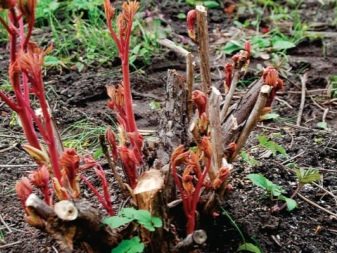
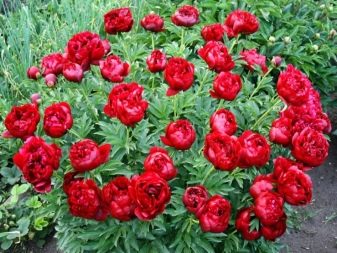
Peonies belong to a plant family that suffers greatly from excessive moisture. There is a great risk of root rot. Disembarkation is recommended in the fall. In spring, plant (and transplant) peonies only when absolutely necessary. Having chosen a suitable zone, holes of great depth are formed.
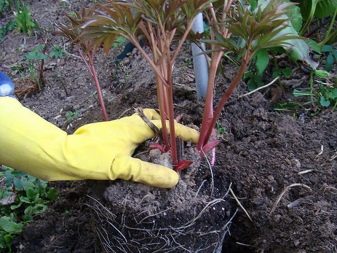
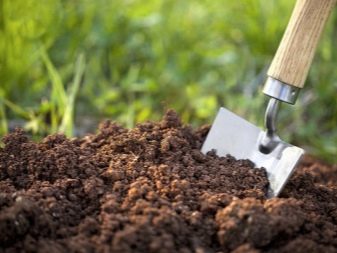
Putting the shovel aside, pour the drainage. It is used as a brick fight, and crushed stone of various fractions. On top of the drainage layer, ordinary fertile soil should be poured. To bring its quality to the proper level, this layer is mixed:
with clean wood ash;
high-quality humus;
recommended fertilizers.
Having planted a peony seedling, they immediately straighten its roots. They should be immediately covered with soil and watered. Important: as soon as the earth, originally laid, settles, a new portion is added. This is required to keep the stem stable. Decent watering is extremely important for peonies in the spring. Planting is irrigated once a week, until early August.
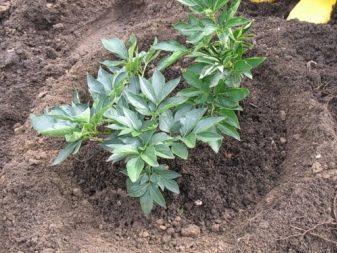

After the soil has settled, it is useful to fluff it up a little in order to facilitate the flow of oxygen to the roots. No special feeding is needed for newly planted bushes. An exception is the situation when the necessary substances were not put into the ground in advance. Fertilizers when planting are usually calculated so that they are guaranteed to last at least 12 months.
Adult peonies require a nitrogen-potassium supplement. Ammonium nitrate is placed on top of the ground. Experimenting with other fertilizers is not recommended. Better to find out what exactly is right for a particular variety.
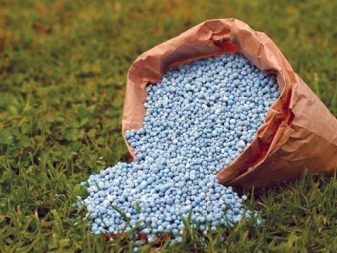

In some cases, the cutting of lateral buds is practiced. They resort to it if they want to increase the main flower to the limit. Important: tall and thin stems need additional support. Very often it can be seen that they are unable by themselves to withstand the stress created by the buds. Another nuance: it is worth combining peonies of different varieties. If you choose the right combination of them, you can achieve coverage of almost the entire summer period.
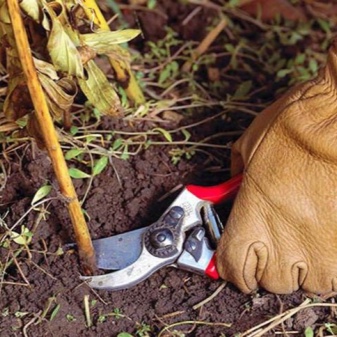
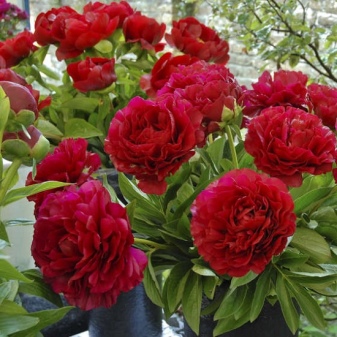
In garden culture, it is often practiced to grow peonies near houses. There, in a clearly visible ceremonial place, the plant will be perfectly visible. Planting this culture in palisades also gives a good result. In this case, a combination with other plants is practiced, which bloom both earlier and later than the peony itself. Promising neighbors will be:
lupine;
chamomile;
phlox;
lily.

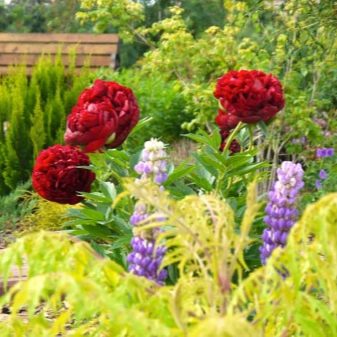
Sometimes in the first year of development, the flower grows sluggishly and adds little in growth. This is completely normal - he simply has not yet adapted to the new conditions.
To reduce stress, you should always plant the peony so that the regenerating buds are at a certain level. Regularly, at least once a week, you should check the possible infection with gray mold.
This disease turns out to be the most formidable opponent of peony lovers.
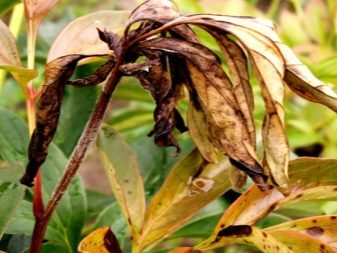
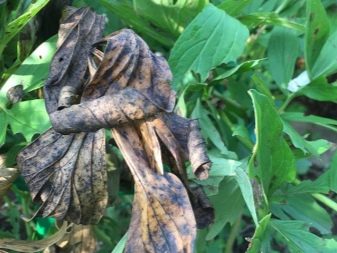
Bordeaux fluid is used to suppress infection. Copper sulfate is also suitable.
Those who do not want to use such toxic reagents should use safer biologicals. But their effectiveness is less pronounced. It is categorically impossible to add a large amount of nitrogen fertilizing.
It is categorically impossible to add a large amount of nitrogen fertilizing.
But the laying of lime or dolomite flour in the acidic earth with peonies is only welcome. This can significantly increase the likelihood of success. Watering an adult flower should be abundant - 20 or 30 liters per plant. Developed shoots are fed with ammonium nitrate: 0.015 kg of this substance is diluted in 10 liters of water.
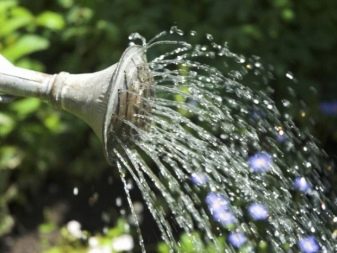
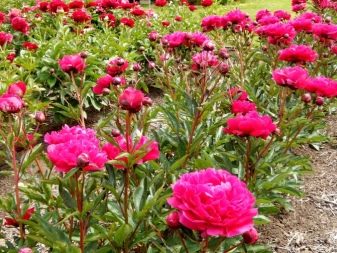
For a video on how to plant peonies correctly, see below.







































































































The comment was sent successfully.